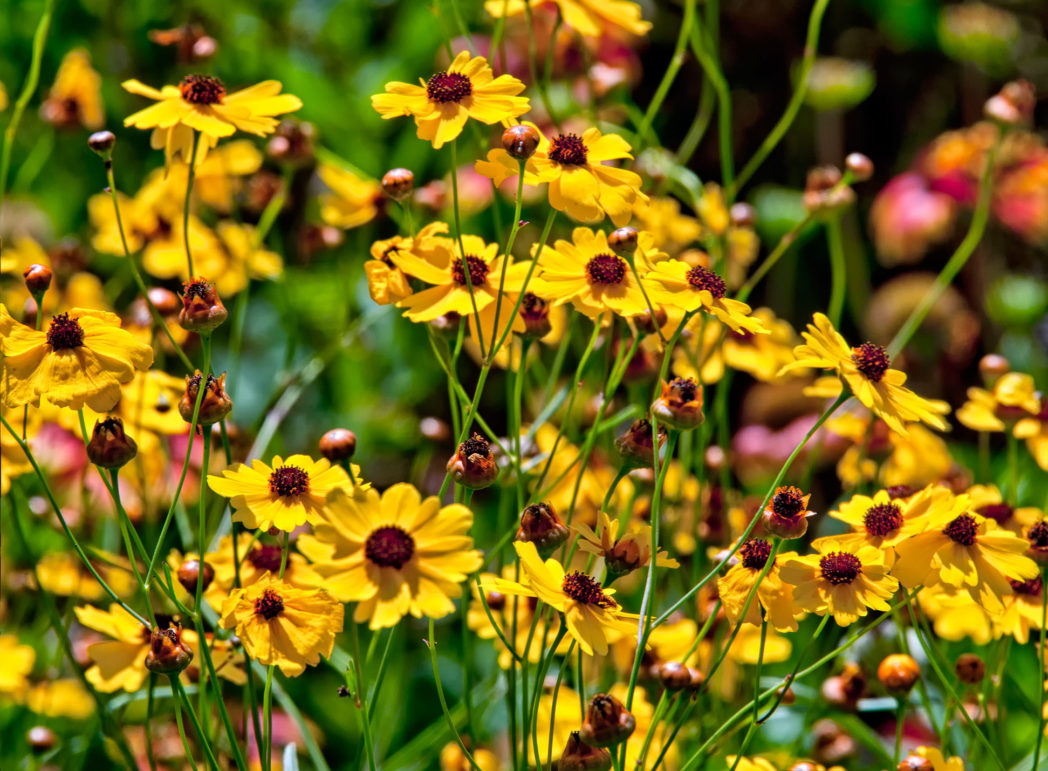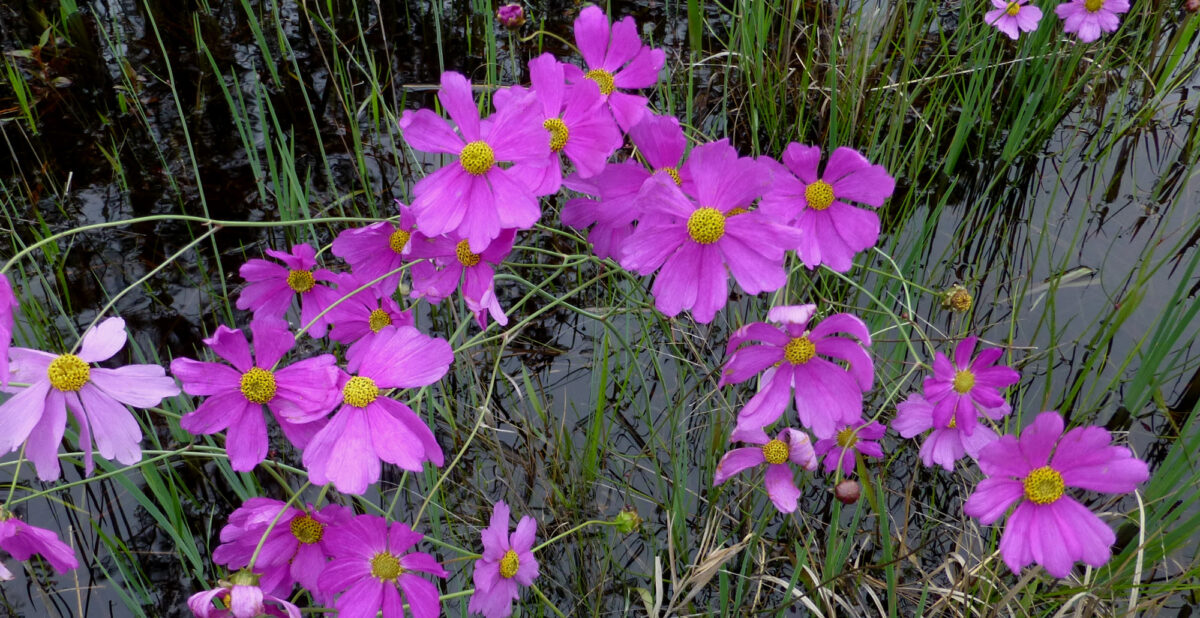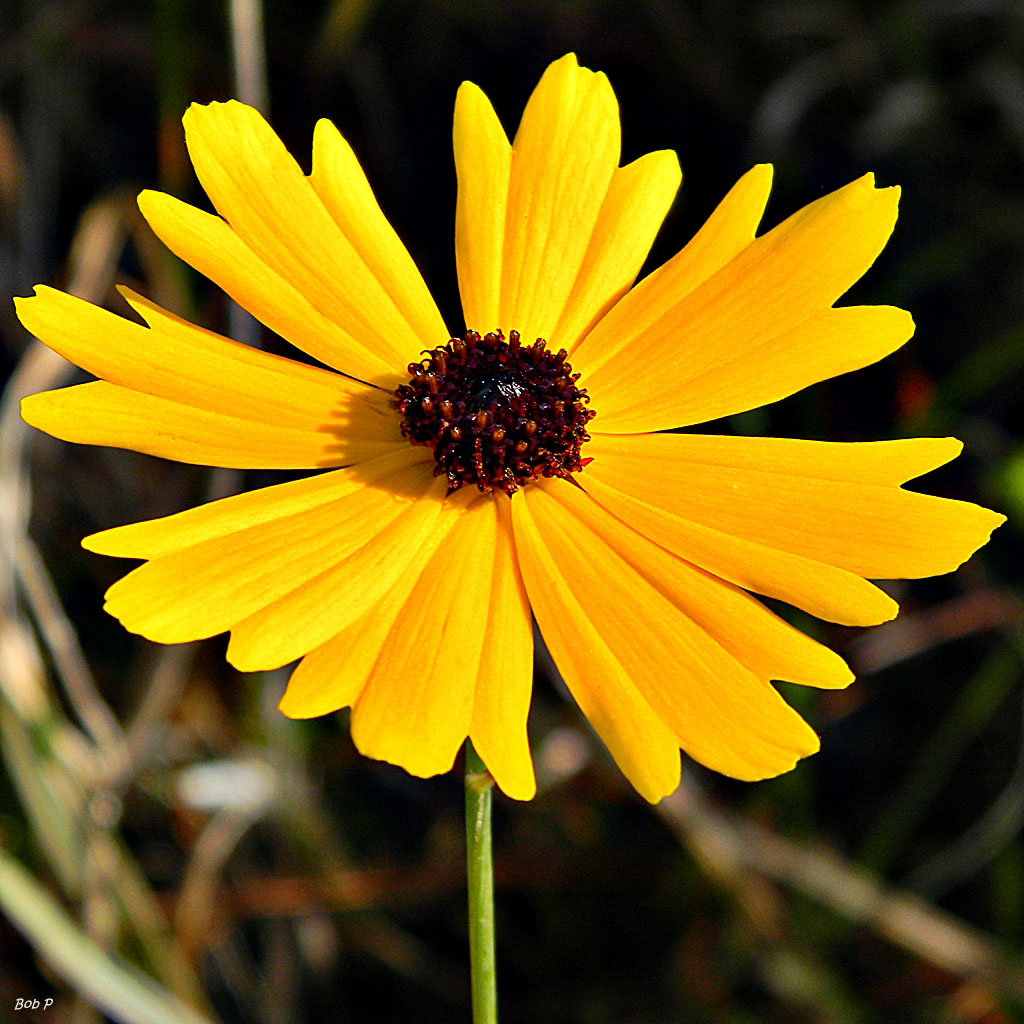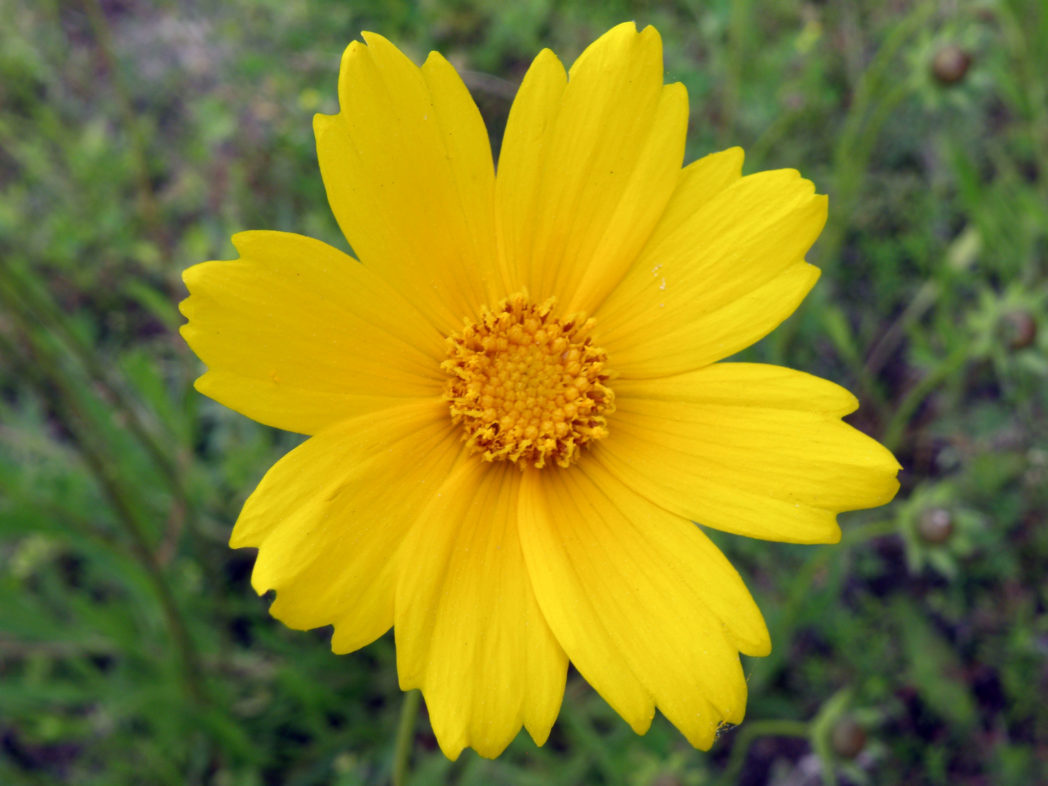Leavenworth’s tickseed
Pictured above: Leavenworth’s tickseed (Coreopsis leavenworthii) by Vince Lamb. Click on terms for botanical definitions. View as a PDF.
Florida’s state wildflower is Coreopsis, also known as tickseed, and refers to all 12 species native to Florida. Many of these occur only in North Florida and the Panhandle. The most common species, Leavenworth’s tickseed (Coreopsis leavenworthii), is almost entirely endemic to Florida — its only other occurrences are in two Alabama counties. Leavenworth’s tickseed can bloom year-round. Its natural habitat is mesic pine flatwoods, but it is often used as a component of mixed wildflower and butterfly gardens, and is excellent for sunny roadsides, highway medians and powerline easements. It attracts many pollinators and is eaten by rabbits (if you’re lucky enough to have rabbits in your landscape).
The 1- to 2-inch wide daisy-like flowers have a center of dark brown to black disk florets surrounded by bright yellow scalloped ray florets. Its bright green leaves are small, narrow and range from simple to lobed to deeply divided, thus giving the plant a more open appearance. Leaves are oppositely arranged. Stems are slender and glabrous with many branches. Seeds are born in awned achenes with membranous wings. Their resemblance to small bugs is the basis for the plant’s common name of “tickseed.”
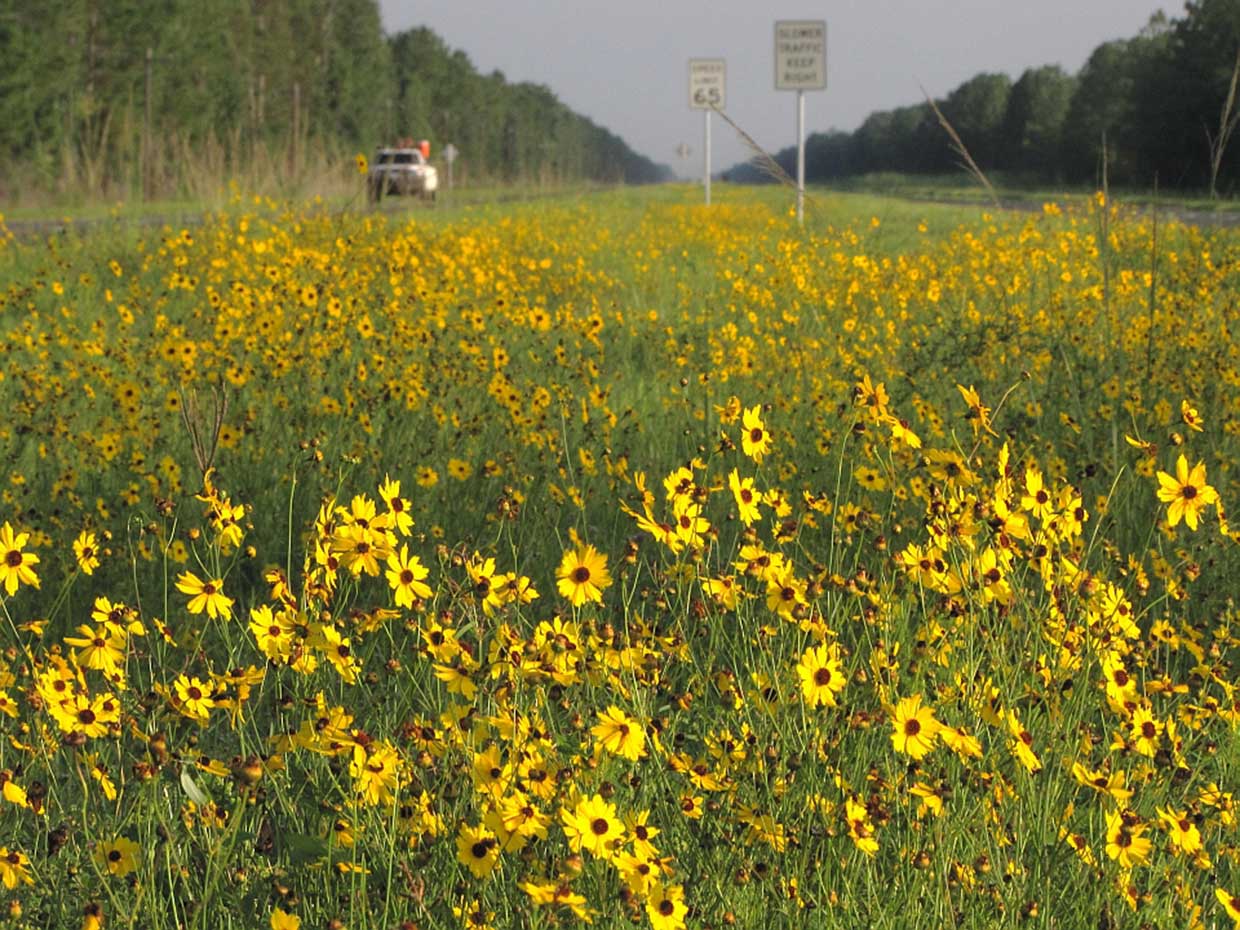
Family: Asteraceae (Aster, daisy or composite family)
Native range: mostly throughout Florida
To see where natural populations of Leavenworth’s tickseed have been vouchered, visit www.florida.plantatlas.usf.edu.
Lifespan: Annual to short-lived perennial
Soil: Moist, acidic soils
Exposure: Full sun
Growth habit: 1–3’+ tall
Propagation: Seed
Florida regions of landscape suitability: North, Central, South
Garden tips: Leavenworth’s tickseed needs a site that offers space for it to reseed. It can reseed between other plants, such as other wildflowers, if they are not too competitive. Though it can tolerate some drought and drier soils, it will not perform as well. Moist soils also allow for reseeding, which is important in maintaining the species. If the plants are cut back near the end of their bloom, they will produce another flush of flowers. They can also be string-trimmed or mowed to 6–8 inches.
Leavenworth’s tickseed seeds are available through the Florida Wildflower Cooperative. Plants are often available at nurseries that specialize in native plants. Visit PlantRealFlorida.org to find a native nursery in your area.
Learn more about Leavenworth’s tickseed from the Florida Native Plant Society and the Institute for Regional Conservation.
For more information on other Coreopsis species, see these resources:

